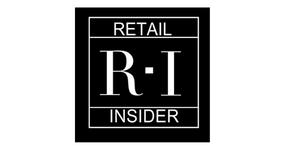Images coming from British Columbia this month were simply heartbreaking: human casualties, dairy cows barely breathing above water being pulled to safety, the loss of livestock across the Fraser Valley. Just devastating. And the flow of goods on both rail and roads is severely compromised. Many have now claimed that flash floods and atmospheric rivers in B.C. were highly predictable due to nature’s occasional destructive wrath. But supply chains out West have always been vulnerable, and that’s not going to change anytime soon.
In the East, the importance of supply chains has often been underappreciated by the public. Ontario, Quebec, and the Atlantic Provinces have been spoiled with the St. Lawrence Seaway. Access to supplies has been easy and we’ve forgotten the Seaway’s logistical genius. Food from Europe, the Middle East and beyond has just floated up the Seaway for decades, servicing the founding provinces of our country at an inexpensive rate. In a Europe-centric global economy, it made sense to rely on Halifax and Montreal.
In the West, business with Asia has only grown over the years. The Port of Vancouver sees over $12 billion worth of agri-food products and commodities, coming in and going out of the country yearly. That is $35 million a day. The Port is close to where half of the world lives. In the fall, commodities grown in the Prairies are Asia-bound, which is why the B.C. disaster could not have come at a worse time for farmers across the country. The weak harvest this year gave them little to sell. And much of those products are now stuck on trains, stranded somewhere in the Rockies.
In the West, building an equivalent to the St. Lawrence Seaway has been a long-standing issue, ever since our nation’s creation, but especially in the last 20 to 30 years. Not building better gateways and corridors has made our Western agri-food economy more vulnerable, especially with climate change. As a result, with the globalization of trade, this vulnerability is now far-reaching, and the B.C. floods have reminded us that we are always one natural disaster away from seeing major bottlenecks.
To be realistic, however, given the topography of the region, it is going to be challenging to develop new options, and build supply chain resiliency. Trading through the U.S. is one option, but bureaucratic compliances and protocols would need to be worked out. We need to secure the few options we do have across the Rockies going into either Vancouver and/or Prince Rupert, now the third busiest port in Canada, after Vancouver and Montreal.Maintenance and making these routes secure will require massive investment. It should have happened years ago.
Beyond trade, the B.C. situation will generate food access issues in the region. Firstly, we will see shortages of certain products, either because the production of certain commodities like milk, eggs and poultry has been severely hampered for a while, or because products cannot get into the Vancouver area. Remember, the Fraser Valley is the breadbasket of the province. Farmers’ boards will need to work with other provinces like Alberta, Saskatchewan, and beyond to provide needed help.
For the rest of Canada, we are expecting sporadic shortages of food products that would have come from Vancouver, but nothing to bring any markets in Canada even close to food insecurity. We just need to adjust our expectations, as we were doing due to supply chain disruptions which were already happening before the B.C. floods.
Climate skeptics will argue relentlessly that bizarre and extreme weather events have been happening for centuries. After the heat dome and wildfires this past summer, and now with the current floods, if you are still a skeptic, you are simply not paying attention. The true backbone of our agri-food system is our supply chain. It’s as simple as that, and we need to take care of it.
The average Canadian doesn’t see or interact with any elements of the supply chain, ever. It’s invisible, but it’s always working. We need to have faith that our resilient food industry will continue to deliver. For governments though, to take care of our logistical network out West, faith is certainly not enough.



![Why the Loblaw Boycott is a Useless Attempt to Address Grocery Pricing [Op-Ed]](https://retailinsider.b-cdn.net/wp-content/uploads/2024/04/loblaw-21-324x160.png)
![Many Canadians Are Risking Illness by Eating Expired Food with Grocery Inflation [Op-Ed]](https://retailinsider.b-cdn.net/wp-content/uploads/2024/04/1565291916714-324x160.jpeg)
